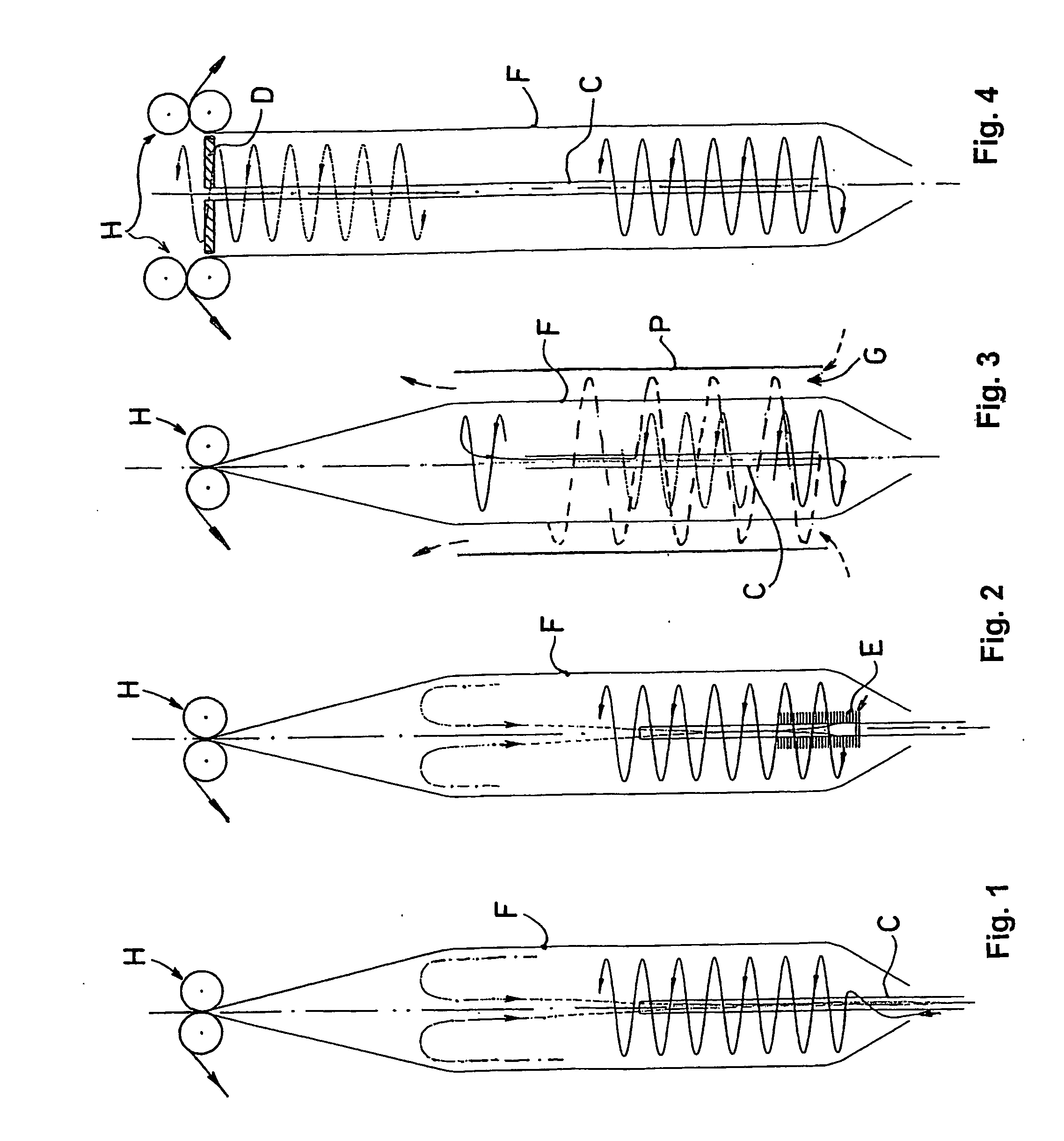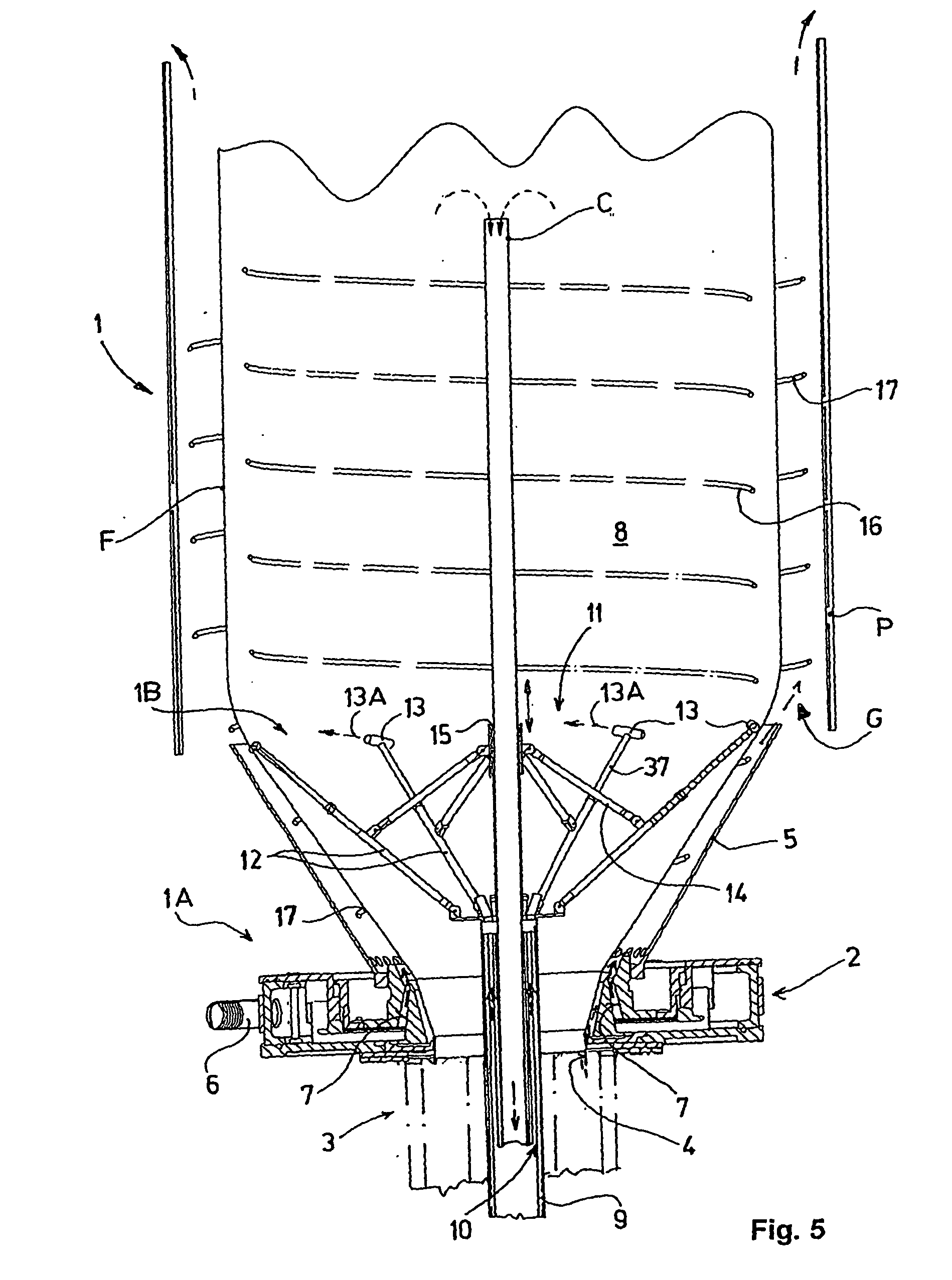Method and apparatus for cooling extruded plastic foil hoses
a technology of extruded plastic foil and hoses, which is applied in the field of method and apparatus for cooling extruded plastic foil hoses, can solve the problems that the cooling speed and evenness of foils cannot always be guaranteed, and achieve the effects of reducing deficiencies, reducing production costs, and increasing foil production productivity
- Summary
- Abstract
- Description
- Claims
- Application Information
AI Technical Summary
Benefits of technology
Problems solved by technology
Method used
Image
Examples
first embodiment
[0027] According to FIG. 1, the cooling technology according to the invention shows an internal cooling of a foil hose F just exiting from an extruder nozzle aperture (not illustrated). As coolant pressurized air is fed in transversally and tangentially (in sharp contrast to traditional solutions of driving it in radially and parallel with the upward direction of progress of the foil). This way, a swirl (rotation) is given to the coolant stream by the tangential inlet, so the coolant stream will flow along a spiral track (indicated by a continuous line) in accordance with our invention, within a cylindrical inner space of the foil hose F, due to the centrifugal force affecting the coolant stream along the internal surface of the foil hose F, and density and pressure differences between various parts of the coolant stream. Thereby the speed difference between the foil hose progressing upwards to a known drawing-off roller pair H, and the coolant stream flowing upwards along a spiral ...
third embodiment
[0031] illustrated in FIG. 3, a combined external and internal foil cooling was applied in accordance with the invention. The foil hose F is mainly cooled along the external foil surface, but this is combined with internal cooling. This system essentially represents a special combination of intensive spiral-like external cooling and an air circulation inside the foil hose F.
[0032] For the external air cooling, a cooling air stream of previously determined pressure is fed into a ring channel G, delimited from the inside by a cylindrical unstabilized section of the foil hose F, and by a cylindrical skirt P from outside. The coolant air is fed into the ring channel G under pressure at a bottom tangential inlet (indicated by dashed arrow). From there, the coolant air stream will flow upwards in a spiral form to an outlet at the open upper end of the ring channel G (this spiral stream is indicated by a thin dotted spiral line), and in the meantime, the foil hose F is effectively cooled ...
PUM
| Property | Measurement | Unit |
|---|---|---|
| temperature | aaaaa | aaaaa |
| temperature | aaaaa | aaaaa |
| storage temperature | aaaaa | aaaaa |
Abstract
Description
Claims
Application Information
 Login to View More
Login to View More - R&D
- Intellectual Property
- Life Sciences
- Materials
- Tech Scout
- Unparalleled Data Quality
- Higher Quality Content
- 60% Fewer Hallucinations
Browse by: Latest US Patents, China's latest patents, Technical Efficacy Thesaurus, Application Domain, Technology Topic, Popular Technical Reports.
© 2025 PatSnap. All rights reserved.Legal|Privacy policy|Modern Slavery Act Transparency Statement|Sitemap|About US| Contact US: help@patsnap.com



